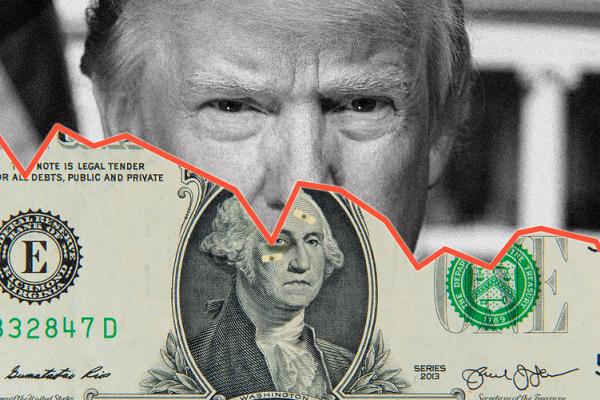The US dollar has had a torrid start to June, suffering significant losses against all the majors. This comes after March saw the greenback strengthen significantly for a range of reasons. As the world’s reserve currency, it has always been somewhat of a haven asset. As such, the widespread flight from risk assets amid the global pandemic unsurprisingly saw USD in high demand. Add to that the massive amounts of corporate dollar-denominated debt and the dollar’s huge gains seem logical.
Given the dollar’s rapid ascent in the wake of the coronavirus crisis, it’s understandable that we would see the greenback lose some of its gains as global quarantine measures are eased. Amid this strong downtrend, the effect of US President Donald Trump’s decision to preserve the recent trade deal despite China’s move to strip Hong Kong of its special legal status was rather muted.
There was, however, another factor in the dollar’s demise this week: the escalation of protests in response to the unlawful police killing of George Floyd. What started as a peaceful demonstration has descended into violent rioting that has seen curfews imposed in several US cities following an intensification of clashes between protestors and law enforcement.
Looking to the Old Continent, this week saw the release of some key economic data in the form of final Manufacturing PMI reports for the Euro area and the UK. Both were in line with predictions and represent a marked improvement from April’s all-time lows. The Euro area report showed 39.4 (against a preliminary estimate of 39.5), while the UK analogue came in exactly at the forecasted 40.7. The US ISM Manufacturing PMI, on the other hand, was reported at 39.8 (just 3.7 points above last month’s level, which was the lowest in over 10 years).
In this context, GBP/USD flirted with 1.1200 but ultimately retreated from this level amid the weak economic data released early in the week. It seems that investors are still cautious ahead of the ECB monetary policy decision and the US Nonfarm Payroll report, both of which are scheduled for release later this week.
Meanwhile, EUR/USD managed to reach 1.2575 even as Brexit concerns continue to grow. The UK and EU resumed talks this Tuesday, with the UK PM’s spokesperson dubbing EU demands “unprecedented” and insisting that the EU27 reconsider its position if an agreement is to be reached. EU officers, on the other hand, have expressed a lack of faith that the UK wants a deal at all.
Finally, turning our gaze to Japan, the USD/JPY pair has been under ongoing pressure from the weak greenback. Nevertheless, it has finally succeeded in breaking out of its recent sideways channel, soaring to the 108.80 region. Now that it has consolidated above its resistance of 108.50 and completed its Inverted Head & Shoulders pattern, the yen could see further growth. Especially if the dollar continues its decline.
Remember, whatever the situation on the Forex market, there are always opportunities with Libertex. With generous leverage available on virtually every currency pair, you can turn a modest deposit into a handsome return in just one winning trade, but you should always consider the risks of losing money using the leverage. So what are you waiting for? Create your Libertex account now and start trading today!


